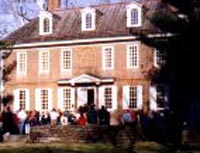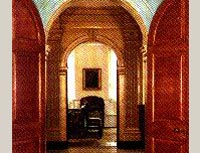Map Controls
- Reset the map
- View Trailheads
- View Trail Towns
- View Places to Visit
Map Legend
- Trailheads
- Trail Towns
- Places to Visit
- Schuylkill River Trail (SRT)
- On-Road SRT
- Proposed SRT
- Proposed On-Road SRT
Plan Your Trip
USING THE MAP
The Schuylkill River Greenways map is divided by Trailheads, Trail Towns and Places to Visit.
- Click on the category of your choice and a dropdown list of content will appear. Click any of the options within the dropdown menu and additional content will appear. Or, click on the “Places to Visit” category to see all available activities along the trail.
- Another way to navigate the map is to rollover the icons on the map. The preview will show you what kind of item it is. Click on it to reveal more information.
- Use the quick links at the top left to filter through Trailheads, Towns, and Places to Visit.
Trailheads/Parking
Trail Towns
Places to Visit
Hope Lodge


Hope Lodge was built between 1743 and 1748 by Samuel Morris, a prosperous Quaker entrepreneur. Morris acted as a farmer, shipowner, miller, ironmaster, shopowner, and owner of the mill now known as Mather Mill.
Hope Lodge is an excellent example of early Georgian architecture, and it is possible that Edmund Woolley, architect of Independence Hall, offered advice in building. Samuel Morris owned the estate until his death in 1770, when it was inherited by his brother Joshua. Joshua in turn sold the property and dwelling to another Philadelphia merchant, William West.
You will see two time periods represented in the house. Some rooms are shown in the Colonial era, 1743 to 1770, when the house was first built. Other rooms are shown as the house was lived in by the last private owners, William and Alice Degn, from 1922 to 1953. Although the Colonial period had been over for a century, the Degns decorated with colonial objects to preserve both the objects and the house. This style of furnishing is now known as Colonial Revival.
In 1957 the Hope Lodge Foundation transferred the property to the Commonwealth of Pennsylvania and Hope Lodge is today owned and operated by the Pennsylvania Historical and Museum Commission.
- Admission Fee
- Gift Shop